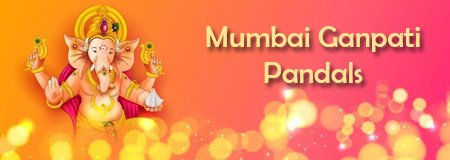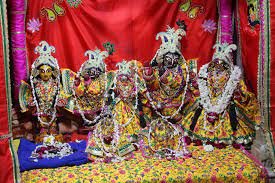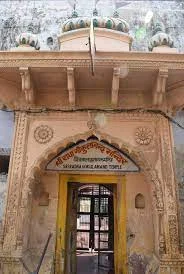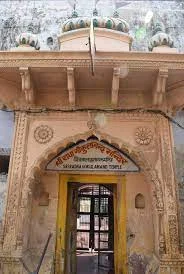Radha Gokulananda Temple in Vrindavan
Vrindavan requires no introduction for the followers of Hindu religion or the devotees of Lord Krishna. It is situated on the banks of Yamuna River in Mathura and it is one of the most famous pilgrimage centres in the country. It is that place where Lord Krishna had spent his childhood. It is that place where the story of Lord Krishna and Radharani has got engraved for eternity.
Located in the pilgrimage city of Vrindavan Mathura, Radha Gokulananda Temple is situated near the Kesi ghat on the banks of river Yamuna. Radha Gokulananda Temple was perceived by and was built with the help of Viswanath Cakravarti. There exist deities of Radha-Vinoda, Vijaya Govinda, Radha Gokulananda and Caitanya Mahaprabhu. Earlier all the deities were worshipped in their respective temples. It was the vision of Vishwanath Cakravati who brought all the deities to be worshipped together under one single temple.
In this temple there is the small Radha-Vinoda Deities of Lokanatha Gosvami, the larger deities of Vijaya Govinda of Baladeva Vidyabhusana, and the Radha Gokulananda Deities of Viswanath Cakravarti. The small deity of Krishna in front of Gokulananda and the Deity of Caitanya Mahaprabhu were worshiped by Narottama Dasa Thakur. Viswanath Cakravarti arranged to have this temple built. Formerly, all the Deities in this temple were worshiped alone, in their own temples.
History of Radha Gokulnanda Temple
Originally, Viswanath Chakravarti worshiped the Deity of Gokulananda at Radha Kunda. He then moved to Vrindavana and stayed with Lokanatha Gosvami. Where this temple is located is where Lokanatha Gosvami would do his bhajana. When the original temple of Radha-Vinoda fell apart, Viswanath Cakravarti had another temple built and called it the Gokulananda Temple. Both his Deity of Gokulananda and Radha-Vinoda were worshiped here.
There is a Govardhana-shila in this temple that was given by Lord Chaitanya to Raghunath Dasa Gosvami. This shila bears the thumbprint of Lord Caitanya. He used to chant while holding the shila, pressing it to His heart or eyes. The shila was always moist with Lord Caitanya’s tears. He would place it on His head or smell it. Lord Caitanya kept this shila for three years and then gave it to Raghunatha dasa. This shila can be seen if you give a small donation. Krishna Priya Thakurani, the daughter of Ganganarayan Chakravarti (the disciple of Narottama dasa), got the service of worshiping Giridhara, the Govardhana shila of Raghunatha dasa Gosvami.
The admirers of Lokanatha Gosvami built a temple for Radha-Vinoda, at the place where the Deity of Radha-Vinoda was being worshiped. Originally there was no Deity of Radharani in this temple. Jahnava Devi had a Deity of Radha made in Jagannatha Puri and installed the Deity next to Radha-Vinoda. The temple where Radha-Vinoda was installed eventually fell apart. The Deity of Radha-Vinoda is now in this temple of Gokulananda.
This original deity of Radha-Vinoda is now being worshiped in Jaipur. The Deity was moved to Jaipur to protect the Deity from an attack on Vrindavana by Muslims. This temple contains the pratibhu-murtis of the original Deities. It is considered that there is no different in potency between the original Deity and the pratibhu-murti.
The samadhis of Lokanatha Gosvami, Narottama Dasa, and Visvanatha Cakravarti are located in a small courtyard next to the temple. Lokanatha Gosvami did his bhajana in this courtyard and left his body at this place. In Narottama Dasa’s puspa samadhi are his garland, kaupins, cloth and mala. Viswanath Cakravarti Thakura entered samadhi in 1674. He wrote the eight prayers of Sri Gurvashtakam, which are sung every morning in ISKCON temples.
There are also the puspa samadhis of Sri Ganga Narayana Cakravarti and Krishnadeva Sarvabhauma. Krishnadeva, who was a disciple of Visvanatha Cakravarti, went with Baladeva Vidyabhusana to Jaipur, to uphold the right of Gaudiya Vaishnavas to worship Govindaji. Sri Ganga Narayana was one of the main disciples of Narottama dasa Thakur.
Lokanatha Gosvami was a contemporary of Sri Chaitanya Mahaprabhu. When Sri Chaitanya took sannyasa, Lokanatha came to Vrindavana. While visiting the places of Krishna’s pastimes, while in the village of Umaraa in the forest called Chatavana, Lokanatha Gosvami discovered the Deity of Radha-Vinoda. Lokanatha’s samadhi is just north of the village of Umaraa, on the bank of Kishori Kunda. The Deity of Radha-Vinoda was revealed to him from this tank. Lokanatha Gosvami used to carry this Deity in a bag hanging from his neck.
Also, originally there never existed a deity of Radharaniji in the temple, however it was placed later. And also initially there also existed another deity of Radha-Vinoda was also worshipped there, however, the original deity was later moved to Jaipur to protect it from attack of Muslims on Vrindavan. The deities which reside in the temple were initially placed and worshipped by different people, which were later placed under the roof of the same temple and since then they are being worshipped at the same place.
The temple also has various samadhis of the sadhus who resided there earlier namely Visvanatha Cakravarti, Narottama Dasa and Lokanatha Gosvami. These sadhus worshipped the deities originally under the different roofs. The samadhis of these sadhus are placed in a small courtyard which is very near to the temple.
In the evening, as soon as the clock shows 5o’clock, the eternal chants of the aarti and immense joy lights up the atmosphere of the temple, and one can indeed feel the calmness in the surroundings of the temple. The schedule of the temple can be described as follows:
















